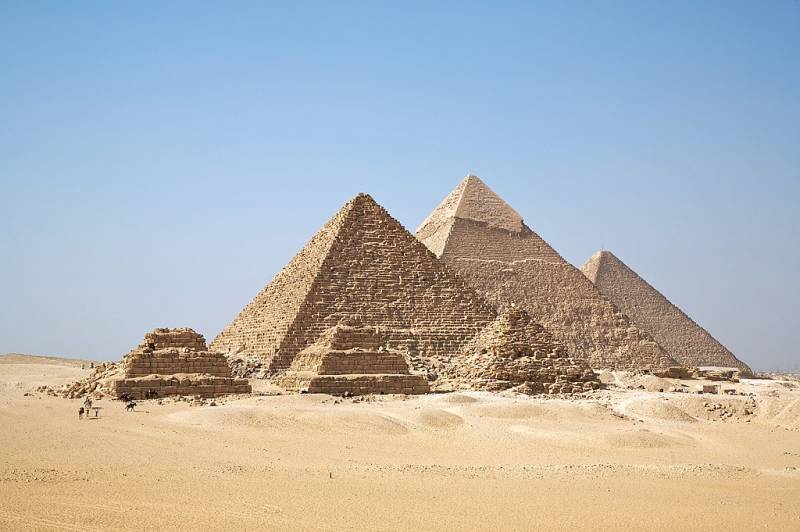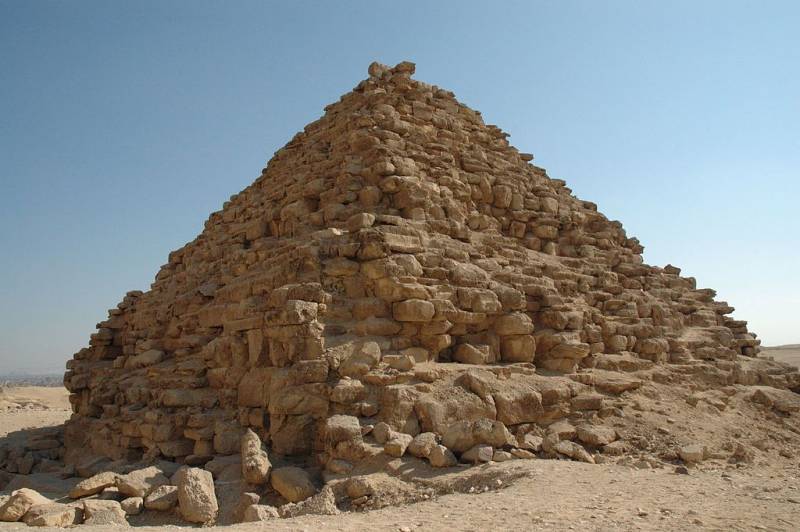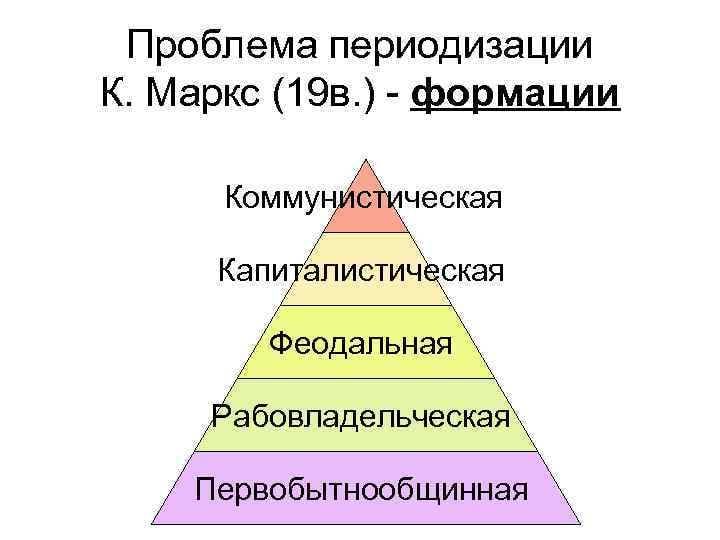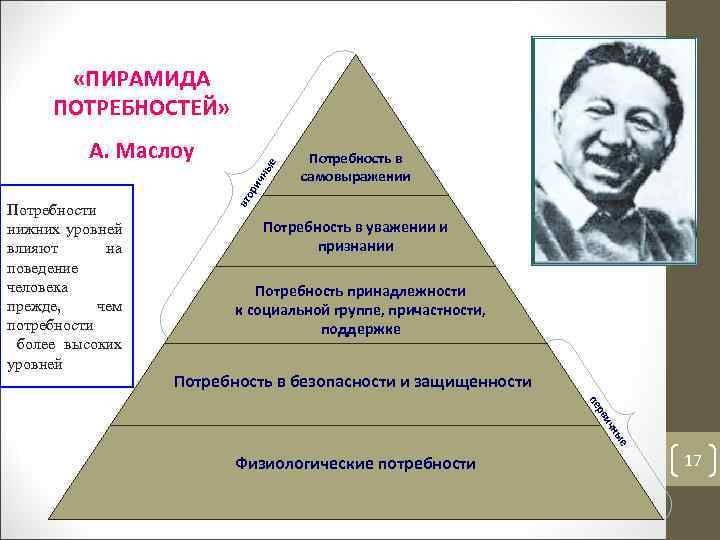No "isms". Everything is based on coercion

Everything in the world is afraid of time, but time itself is afraid of the Great Pyramids!
To his cause, for work, he himself will not undertake hunting:
Odyssey, Homer
Problems of historical knowledge. So, in the two previous parts, we showed the following: that Marx's "five-term" was originally a "six-term", but was "cut off" by Soviet historians, who considered such a division stories more convenient. We also showed that there was not a single characteristic feature of the era, so to speak, "in its purest form." That all characteristics are blurred, since in one of the "periods" very often there is a certain percentage of the previous one, so that one has to constantly talk about "remnants" and the multistructural nature of the economy. And it was not for nothing that one of the readers of VO asked: “Is there anything permanent in history?". That is, we need to find something unchanged in all historical eras and on its basis ... create a new periodization of history.

It is said that even the blade of a knife cannot be inserted between the stones of which the pyramids are built. But in reality this is far from the case. Pyramid of Queen Khamerernebti II
And the most interesting thing is that there really is something “so unchangeable” in our life. This is our attitude to work!
To begin with, let us recall what three types of attitude to work exist. The first is natural coercion to work. Man is forced to work by nature itself. It is clear that this was the case in the primitive era. There is no state, there is no coercive apparatus, but you want to eat something, you need to feed the female and her cubs, which means going hunting. K. Marx wrote that human society is organized according to the pyramid principle. Above are the best, and below ... also the best. Only with the opposite sign and greater numbers. If the strongest are at the top, then the weakest are at the bottom, right? Such was the organization of human society in the Stone Age: at the top, all the most physically strong, and below them, all the rest. Since any society, or any “pyramid”, functions within the framework of the “Pareto Law” (percentage ratio 80/20), the strongest at that time could not oppress the weak, even those who had lost limbs were taken care of in the tribe (this is evidenced by a find in a cave Shanidar - V.O.). Although it is unlikely that the life of these people was so joyful. Most likely, they threw leftovers. But, nevertheless, it was still at least some kind of life.

Here it is - a "five-member" in the form of a pyramid!
In addition to the "pyramid of physical strength" in the Stone Age, there was a second pyramid - the "pyramid of the mind." Shadow! Because the "smartest" have always been, but the level of technology development did not allow them to turn around. In the tribe, they "shamanized", painted the walls of caves, made jewelry.
But now society has accumulated knowledge, technology has become more advanced, society has become richer, and a pyramid of ... kind has arisen. At the top were the descendants of primitive leaders, to whom, under the new conditions, they began to attribute both strength and wisdom. The most noble! And therefore those who have the most rights. Remember the Gascon nobleman d'Artagnan, who did not have a penny for his soul, but who had barely found himself in Paris, when he "began to download rights." And all why? Because his ancestor once fought alongside the king in wars for the faith. This is how a new era began - the era of non-economic coercion to work, which, by the way, is very well written not just anywhere, but in our Great Soviet Encyclopedia (Non-economic coercion).
In this era, we can easily combine slavery and feudalism - and thus cross out two "isms" at once. Indeed, in both cases, the bulk of the workers are forced to work by force! It is clear that in the depths of the old society, new social and economic relations are always born. So, in a society built on non-economic coercion to work, economic coercion arose, and a new pyramid began to be gradually erected, pushing the pyramid of nobility into the background - the “pyramid of wealth”. We can say that it was at the same time a “pyramid of the mind”, that is, the “smart” finally came out of the shadows and occupied what was rightfully due to them. After all, how to become rich without a mind? No way! Although, of course, some accompanying character traits are also needed, such as decisiveness, courage, unscrupulousness (where without it ?!) and much more, which made up a characteristic portrait of the same people of the era of primitive accumulation. In general, whatever you say, but the allocation of time for non-economic coercion to work in a separate era immediately solves many problems of periodization and, in addition, simplifies it.

According to Marx, society is also a pyramid...
So why did Soviet historians abandon it? Yes, simply because such a division would expose the immaturity of the Soviet era, in which, as under slavery and feudalism, there was non-economic coercion to work. It was required to work without fail, otherwise a person was threatened with a prison term for parasitism - that is, Soviet society, in fact, was semi-feudal, no matter how strange it may sound, and many people were not interested in it in the quality and quantity of their labor. And who was at the top? Not the smartest, that's understandable. And not the richest - their "pyramid" in the USSR was in the shade ... At the top were ... "the most faithful." Faithful (and in words!) to the ideas of Marxism-Leninism. In addition, this society could not do without the purely slave labor of prisoners. After all, it is not for nothing that all the economic problems of the USSR began after 1959, when the last Gulag camps were closed. Everything that came from there now had to be received for money, to pay “northern” people, which increased the cost of everything at times. They were solved by the redistribution of funds by the state itself. That is, again, non-economic means of control. Which, of course, could not but affect the efficiency of the economy, which has never been economical. Well, how do you like this society? What is surprising is not that it eventually ceased to exist, but that it lasted so long, which, by the way, speaks of the enormous role of ideas circulating in society. For a while, they may even become more important than the economy, but only for a while!
It is quite obvious that such a society could not compete with a society of economic coercion, where no one forces anyone to work for themselves, but where everyone's own well-being depends heavily on the quality and quantity of work. And, of course, social progress has given rise to an amazing number of “pyramids” in our modern society. The multimillionaires and the poor have their own "pyramid". Prostitutes - at the top of the currency kept women, at the bottom of the highway "shoulders". Writers - at the top are those who are published, say, in our Eksmo, Rosmen and AST, and receive royalties for their books, at the bottom are those who ... pay for the publication of their books themselves. The artists below are those who sell their paintings on the boulevards, and at the top are those who are shown in the best metropolitan galleries. Well, and so on ... And everywhere, in any "pyramid" we can find division according to the 80/20 principle. 80 at the bottom - 20 at the top.
Naturally, the impact of these 20 on 80 of all the rest has changed dramatically over the past millennia, but in general, everything has remained the same. 20 have the power of power, 80 have the power of opinion!

Another completely unshakable pyramid is Maslow's pyramid of needs. As these needs have always been, so they will be!
So what do we end up with? Periodization without “isms”, only from three stages of socio-economic development: the era of natural coercion to work, the era of non-economic coercion to work and the era of economic coercion to work, with an appropriate set of social pyramids.
This division, by the way, makes it possible to predict the further development of society. Who can be at the top in the future? As before, there will be "the smartest", but among them there will be more and more "indigo children", people with paranormal abilities. The role of the “pyramid of operators” will sharply increase - people who will manage robots-workers. But the "pyramid of workers" will be drastically reduced. Industrial robots will displace people from a number of professions, and they will only have to exist on welfare and have fun. On the other hand, the role of people who can do something with their own hands will increase.

From time to time there will be a lack of certain professions, and those who can quickly master them will be able to change their place in the pyramid, and even the pyramid itself. Today in Penza, for example, there are not enough seamstresses!
“Home-made” will again be in price, and consumer goods made by robots, albeit of high quality, will be considered the lot of 80 percent. All these tendencies have already clearly emerged today and will only deepen in the future. But "isms" both in theory and in practice will be done away with. Their time in history is over!
Information